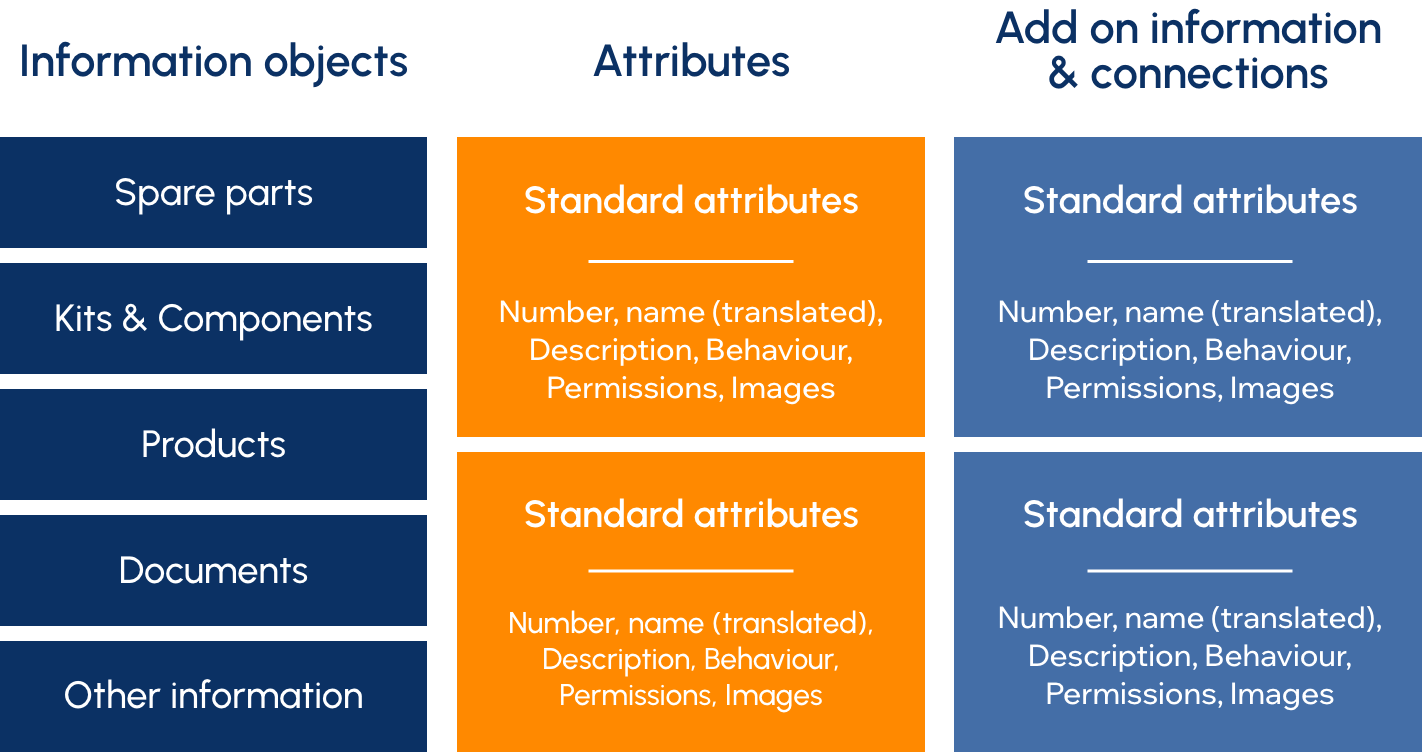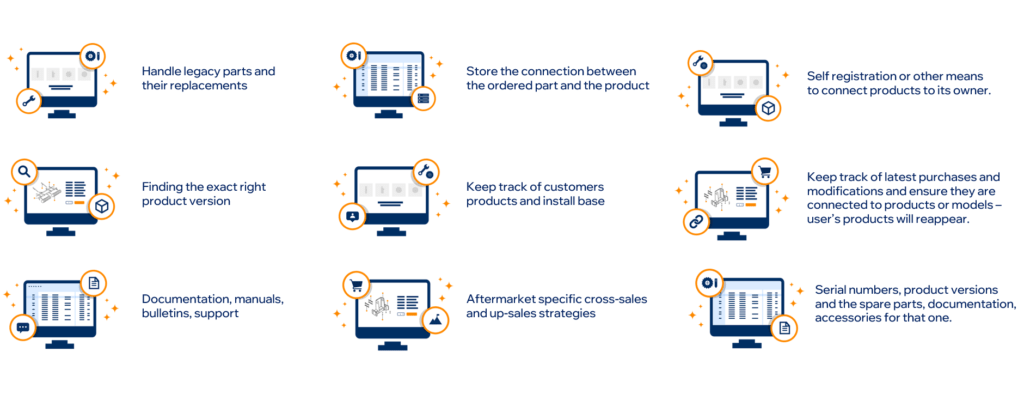Product Information Management
for an Efficient Aftermarket
Breaking Down Content Silos with Case-Based Workflow

What is an Aftermarket PIM
Aftermarket PIM manages the needs of aftermarket sales and services, whereas a classic PIM focuses on finished goods. Aftermarket data management and its complexities related to spare parts, aftermarket sales and service information are managed using streamlined Aftermarket PIM system.
This specialised and efficient aftermarket PIM consolidates aftermarket data from various sources into a unified repository, including spare parts catalogue, exploded views, service bulletins, and catalogue documentation.
It facilitates creating, managing, and distributing spare parts catalogues, service kits, replacement chains, and other aftermarket-related content.
This assures field teams and customers of the most accurate and up-to-date product information on aftermarket sales, services and eCommerce.
Signifikant Aftermarket PIM Toolset

Say goodbye to information overload and get personalised aftermarket content with Signifikant's innovative approach.
Product Information Management for Aftermarket
In business, efficient task performance depends on relevant information. With large volumes of aftermarket data, companies need to deliver service information based on roles, skills, tasks, and locations.
Signifikant’s three-step approach—consolidation, tagging, and filtering—transforms content silos into case-based workflows, including catalogue integration. It helps deliver personalised aftermarket service and product information, reducing downtime and improving spare parts PIM solution for aftermarket sales and eCommerce.
This process ensures relevant, reliable aftermarket product information reaches users, allowing them to perform tasks efficiently. Signifikant optimises aftermarket data for eCommerce and aftermarket sales, enabling service organisations to manage equipment maintenance and spare parts efficiently while minimising disruptions to business operations.
STEP 1
Consolidation
Service information is often stored in various tools with different technologies, structures, and terminologies. Signifikant consolidates this aftermarket data into a unified aftermarket database while preserving each tool’s unique features. This ensures that product information from each tool is imported, mapped, and synchronised regularly to maintain a consistent and up-to-date aftermarket data set for eCommerce.
STEP 2
Tagging
All service information, from small text fragments to complete catalogues or information types, is tagged for multiple purposes. Tags determine the machines for which the catalogue product information is valid, such as serial numbers, production dates, or machine characteristics. Tags also identify the users for whom the product information is relevant, considering their roles, language preferences, and skill levels,including those involved in eCommerce transactions.
STEP 3
Filtering
Information is filtered to ensure only relevant aftermarket data is delivered to users. Filters apply based on the user’s role, preferred language, skill level, organisation’s partnership type, agreements, subscriptions, customer machines, and tasks. This process delivers precise user service information and eCommerce contexts, reducing the need to search through multiple catalogues or tools.